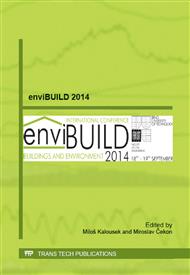p.206
p.210
p.217
p.222
p.226
p.231
p.235
p.239
p.243
Emissions of Nanoparticles from Small Combustion Equipment with Regard to the Combustion Mode and Wood Humidity
Abstract:
Contamination of air by solid particles is serious problem for human health and also environment, especially in certain regions of the Czech Republic and Poland. Small particles in nano-sizes are more dangerous than same weight of larger size. Negative effect namely of the solid particles depends on number, specific surface area, respirability and bonding of others substances (e.g. PAH, As, Cd, Zn, Cu etc.) which are higher for smaller (nano-sizes) particles compared to larger one. With the approaching winter, yearly problems with distribution of particles from small combustion equipments arise. The annual emission balance indicate that the proportion of small sources to total air pollution (PAH, dust) is surprisingly expressive [1]. For this reason mentioned above this contribution deals with measuring of amount, and distribution of nanoparticles produced form combustion of wood in small combustion unit.
For combustion test in grave-free stoves were used three samples of wood (wet spruce, dry spruce and raw spruce) and two combustion modes. Nanoparticles from flue gas were characterized by the aperture low-pressure cascade impactor DLPI (separation and weighing of particles in sizes 30 ηm ÷ 10 µm). Wood were combusted in the form of ¼ logs.
Info:
Periodical:
Pages:
226-230
Citation:
Online since:
October 2014
Keywords:
Price:
Сopyright:
© 2014 Trans Tech Publications Ltd. All Rights Reserved
Share:
Citation:


